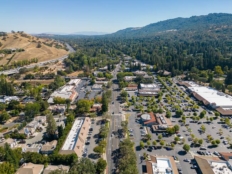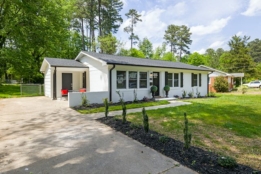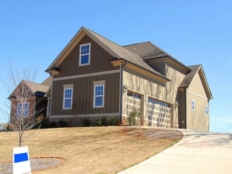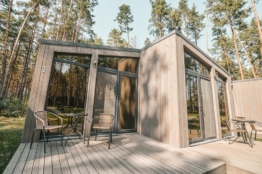Table of content
KEY TAKEWAYS
- California has undergone recent changes in ADU rules, including updates to height restrictions, more transparency in the 60-day rule, and the ability to sell ADUs as condominiums.
- ADU ordinance provides a legal framework for the construction and use of ADUs, and it is continually evolving to meet the state’s needs.
- An ADU is an independent living facility located on the land of a primary residence.
- We are an experienced team of real estate professionals in Contra Costa County, and we can provide advice and guidance for buyers and sellers with an interest in ADUs in the county.
If you are considering building an accessory dwelling unit (ADU) in California, you need to have a comprehensive understanding of recent changes to California ADU laws. As of 2023, there have been significant regulatory changes due to legislative updates like AB 2221. In this blog post, we take a deep dive into the intricacies of ADU guidelines in California, breaking down considerations that impact prospective builders, like:
- Permissible sizes
- Compliance criteria
- Recent amendments
Whether we are talking about the maximum square footage based on bedroom count, to rules governing attached and detached units, we are offering a complete guide to the recent changes to regulatory conditions.
This is a post for anyone from homeowners exploring possibilities to a developer adapting to evolving laws. This post removes the mystery from essential requirements for success in bringing an ADU project to completion in California.
What Are California’s ADU Requirements?
The ADU rules in California have undergone significant change in 2023 that will impact the market from 2024 onwards. The aim is to create a more flexible and accessible landscape for construction and use. Key updates include:
- Updated height restrictions: New laws permit ADUs to be built from heights of 16 feet up to more than 25 feet, depending on circumstances.
- The 60-day rule: Permitting offices must now provide detailed explanations and recommendations for improvements within 60 days if they deny an ADU application.
- Front setback clarification: There is no longer a mechanism for cities to deny ADU applications of 800 square feet if they encroach on the front setback.
- Condominium sales: With AB 1033, ADUs can now be built and sold as condominiums.
The essential criteria are now clearer for what is needed to construct an ADU in California.

Who must you be?
The simple answer is that, to build an ADU in California, you need to be a property owner with the necessary finances to design and construct an ADU that meets all the necessary ADU regulations in California.
What sort of income do you need?
To build an ADU in California, it’s similar to buying a house in California – you need enough money for the project. Converting a part of your home is usually less expensive, but building from scratch typically costs anything from $200,000 to $400,000. If you need to take out finance to do this, you will need sufficient income to cover the repayments.
Where must you live?
The new regulations apply to all of California, but local California ADU ordinance can vary slightly. We operate in Contra Costa County, and can offer support and guidance on ADU construction if you are looking to buy or sell a home in Contra Costa. But you will need to do your research wherever you may be.
What different types of ADU are there?
There are three main types of ADUs:
- Detached: Standalone structures on the main property, which can now be sold as separate properties with their own property tax requirements.
- Attached: These are attached to the main property, traditionally providing extra living space for the main residence. They can now be sold or rented out.
- Converted space: Basements, attics, garages, barns; these ADUs are made by converting existing constructions.
All types have their own pros and cons, and all are subject to the new ADU requirements in California. This is why it’s so important to familiarize yourself with the regulations if building, renting, buying, or selling an ADU is something you are considering.
What Is California’s ADU Ordinance?
When we talk about ADU ordinance in California, we are referring to the regulations and laws that govern the construction of ADUs in the Golden State. These ordinances exist to provide a legal framework for property owners and developers who wish to build accessory dwelling units on their properties. ADUs are often referred to as granny flats, and they are housing units that are either attached or detached from the primary residence.
There are many specifications encompassed by current California ADU rules, including:
- Size limitations
- Setback requirements
- Zoning considerations
The ordinance outlines the conditions that dictate the planning, designing, construction, and use of ADUs to ensure compliance with building codes and other important requirements.
There have been various changes to ADU ordinances in California, but there has long been a problem of unpermitted ADUs being built due to the difficulty of getting approval. Recent legislative changes, like Assembly Bills 68, 881, and 2221, have played a significant role in easing restrictions and streamlining the permitting process. The aim is to make it easier for property owners to add accessory units, creating more available housing and addressing the diverse housing needs of local communities.
If you want to navigate these regulatory frameworks properly, you will need the help of a knowledgeable team of real estate professionals.
What Are California’s Local Ordinances For ADU Requirements?
As mentioned, you will find some variation between different localities when it comes to ADU requirements in California. You are likely to find subtle variations in policy between cities in San Diego and Los Angeles, for example. In Contra Costa County, there are specific processes for gaining planning approval and building permit requirements, and we can help you familiarize yourself with these.
Generally speaking, local ordinances adhere to ADU requirements for California as a whole, with minor permitted deviations that suit their locales. When you work with us, you have a comprehensive team of real estate professionals in your corner. Every individual on our staff has a unique skillset and a wealth of experience to draw from, so you are in good hands when looking to buy or sell here.
We can also provide extensive guidance on the impact of the evolving ADU guidelines in California on the local market here. If your plans include buying, selling, or renting a granny flat in Contra Costa, we can help.

What Qualifies As An ADU In California?
According to the ADU Handbook developed by the California Department of Housing and Community Development, the definition of an ADU is simple. They are housing units with a full set of independent living facilities for one or more people, situated on the land of a concurrent main property.
There are, however, more specifics when it comes to ADU requirements in California. It is AB 670 that creates the definitions that relate to independent utility connections, while AB 881 modifies regulations relating to setback requirements. SB 13 defines new compliance regulations for ADUs that aim to help more existing landlords become compliant, while AB 68 lays out rules for ADUs as they relate to multifamily housing. You must navigate these things and more, which is why it is important to get professional help in California.
From a general perspective, the new ADU rules in California make everything easier, more accessible, and more flexible. Practically, for homeowners, they make it simpler to get approval for ADUs and offer more versatility for how they can be used. Whether you want to rent out your property or sell it as its own entity, the new regulations make provisions to do so. And the new construction standards include guidance on:
- Heights
- Square footage
- Zoning restrictions
- Front setbacks
It is easier than ever before to comply with ADU design standards in California and get approval for your plans.
The California ADU And Zoning Laws
California’s ADU regulations define specific zoning regulations that vary across municipalities. Assembly Bills like AB 68, 881, and 670 aim to streamline and standardize ADU development by addressing certain zoning-related challenges.
Assembly Bill 68 reduces the ability of local jurisdictions to impose troubling restrictions like off-street parking requirements and owner-occupier conditions. AB 881, meanwhile, addresses setback requirements that have shown themselves to be common barriers to ADU approval. These changes make it easier for property owners to build ADUs and also promote more efficient land use.
Zoning laws are important for controlling the construction of new buildings on properties anywhere in the country, and the recent legislative changes to California ADU rules aim to strike a balance between preserving neighborhood character and accommodating rising demand. Zoning ordinances often specify whether ADUs can be attached or detached, as well as things like:
- Maximum height
- Maximum square footage
- Distance from property lines
It is crucial to understand California’s ADU and zoning laws if you are a property owner exploring the possibility of construction. Keep yourself informed about the evolving legislative landscape in order to be compliant and make your contribution to the state’s broader goal of building more housing options without harming neighborhood integrity.
How To Build An ADU In California Following All The Requirements
The permitting process of obtaining ADU building permits in California has been streamlined. Essentially, the process goes like this:
- Submit your plans for the city’s initial reviews. They will be reviewed by various departments and a Plan Checker is assigned. Permit fees vary by jurisdiction, so look into the details for your locale.
- The city has 60 days to respond with an approval or denial. Under the new legislation, denials must be supplied with a detailed list of reasons for denial as well as recommendations for improvements in order to get approval.
If you need to resubmit, you can do so once you have made the necessary improvements.
Cost is an important consideration when planning any kind of construction. When it comes to ADU projects, you can typically expect to spend anything from $50,000 to $300,000+ on a project. The actual cost depends on various factors, including:
- Unit size
- Location
- Type of ADU
- Complexity of the design
- Whether it’s built from the ground up
You must also consider the current state of the local housing market, particularly if you are looking to sell or rent the ADU once it is complete. We can help you plan and account for all of these considerations if you work with us. Our professional network can detail financing options and potential incentives available in your area, so make use of us for your project.

Reduced Parking Requirements For ADUs
One common barrier to approval for ADU plans in California was the strict off-street parking requirements. But the recent changes to ADU California rules have addressed this problem. AB 68 played a pivotal role in this, limiting the ability of local jurisdictions to impose unnecessarily stringent parking regulations on ADU plans.
By streamlining the approval process, regulatory changes make it easier for homeowners and developers to get their ADFU plans approved. An ADU is exempt from mandatory off-street parking if it is located:
- Within half a mile of public transportation
- In a historic district
- As part of an existing primary residence or accessory structure.
This relaxation in parking requirements is in alignment with California’s broader effort to encourage ADU construction. There have long been housing shortages, and a need to foster more sustainable urban development. This is seen as a solution to both issues, contributing to a more flexible and diverse housing landscape.
For property owners and developers, it creates additional avenues for income, and it also supplies more affordable housing for young families and professionals to get onto the property ladder. So it is helpful regardless of whether you are looking to buy or sell a house.
Frequently Asked Questions
What Are The Requirements To Build An ADU In California?
California ADU laws state that you must be a homeowner and meet the local zoning and compliance regulations to build an ADU in California.
What Are California's Local Ordinances For ADU Requirements?
This varies somewhat between locales. But ordinances include minimum height limits, square footage requirements, and more. But recent changes to legislation have streamlined the application and approval process for ADU construction.


































































